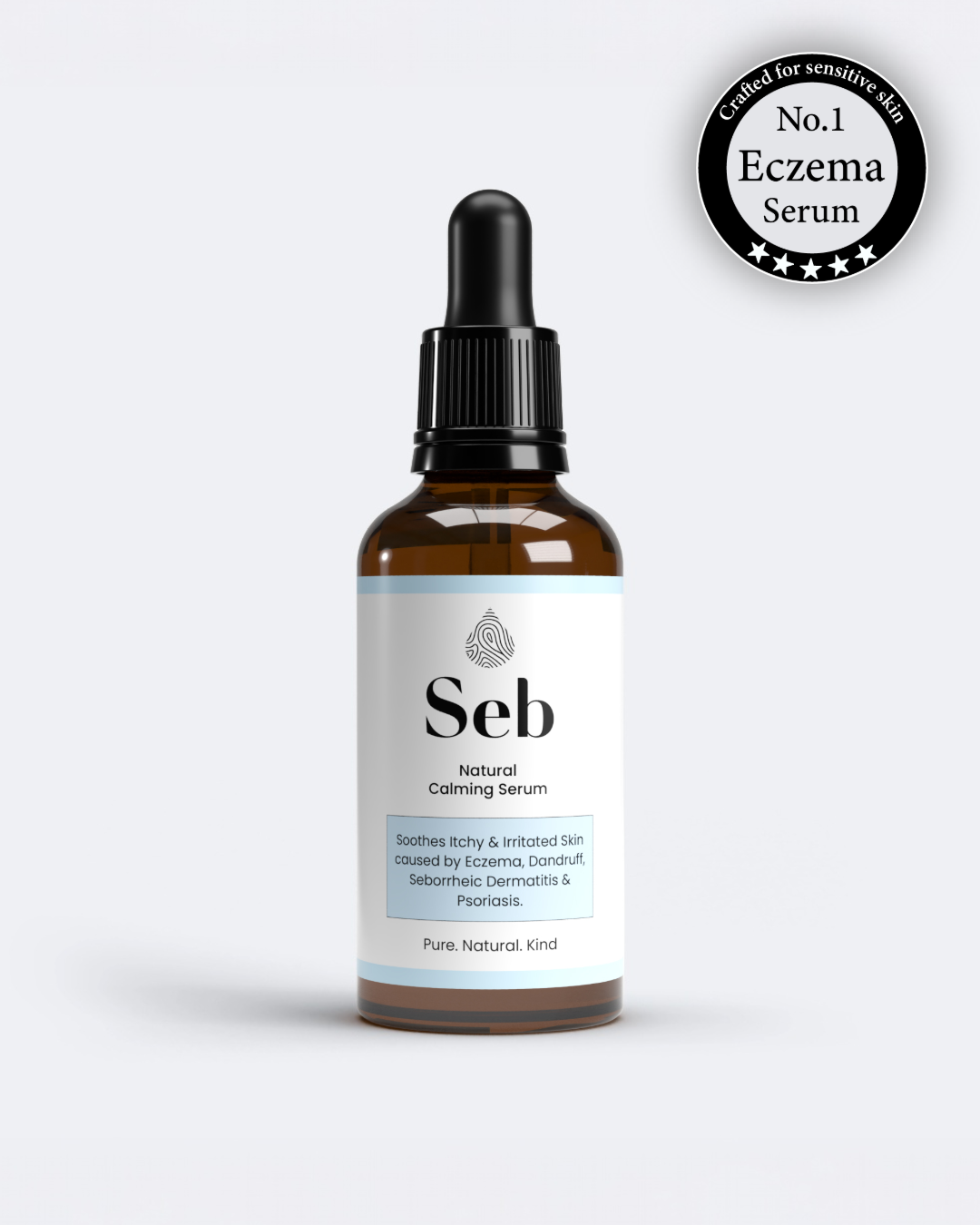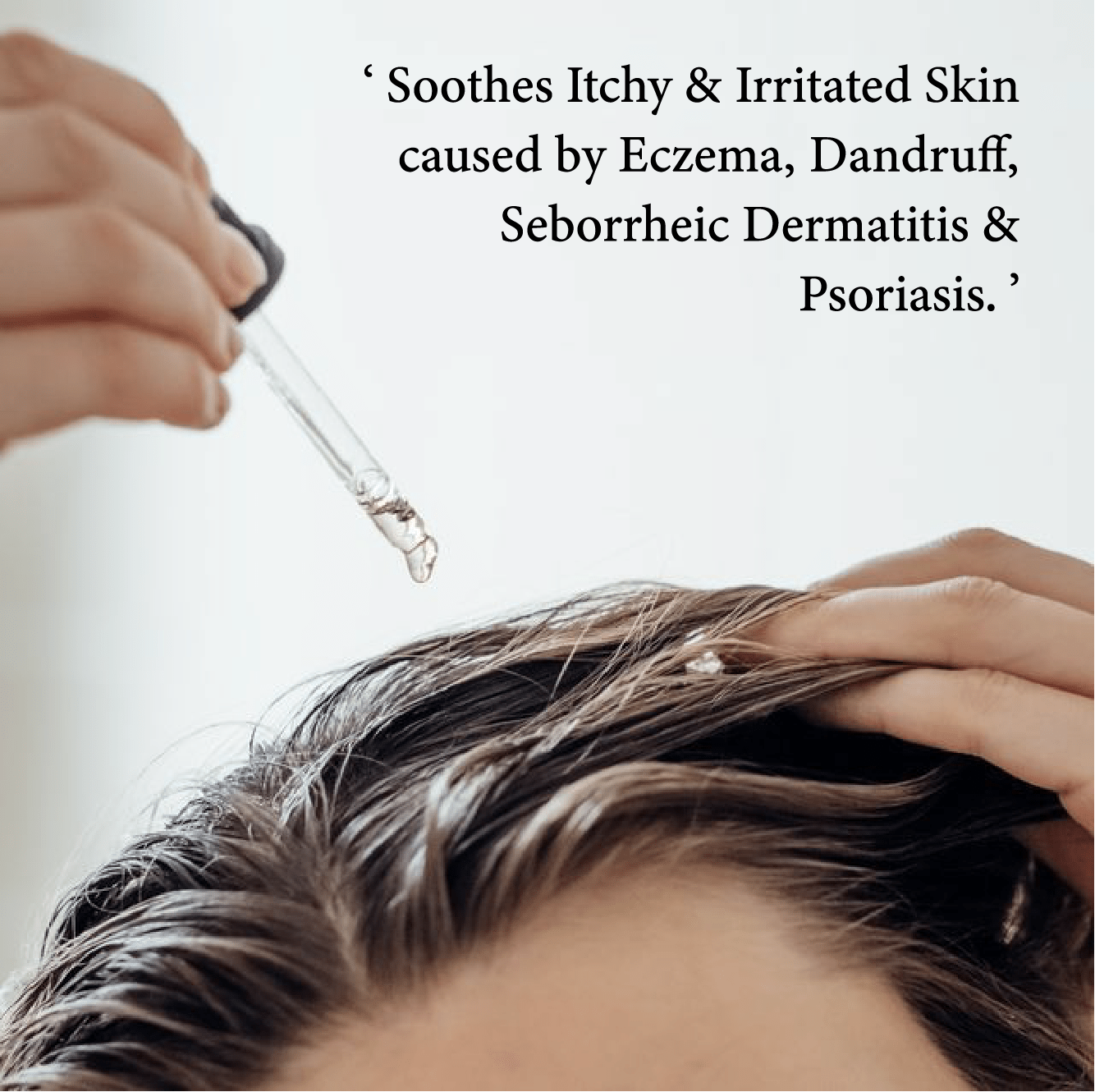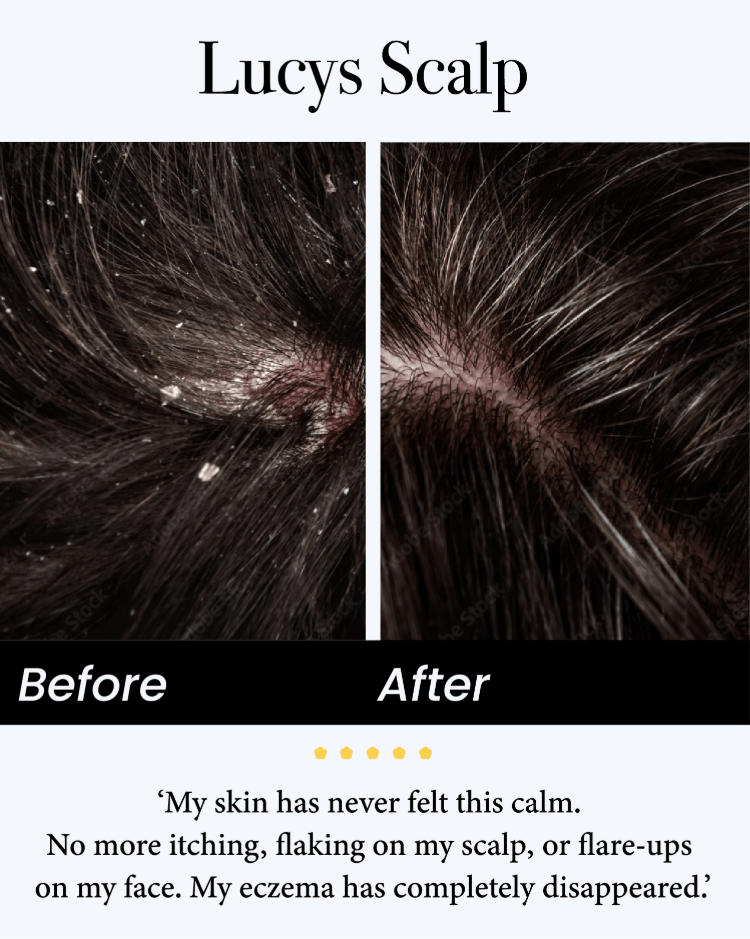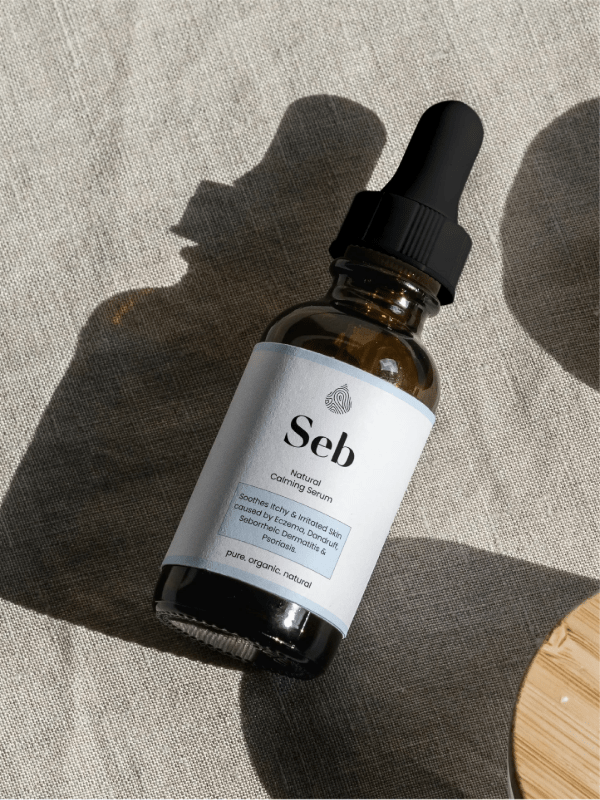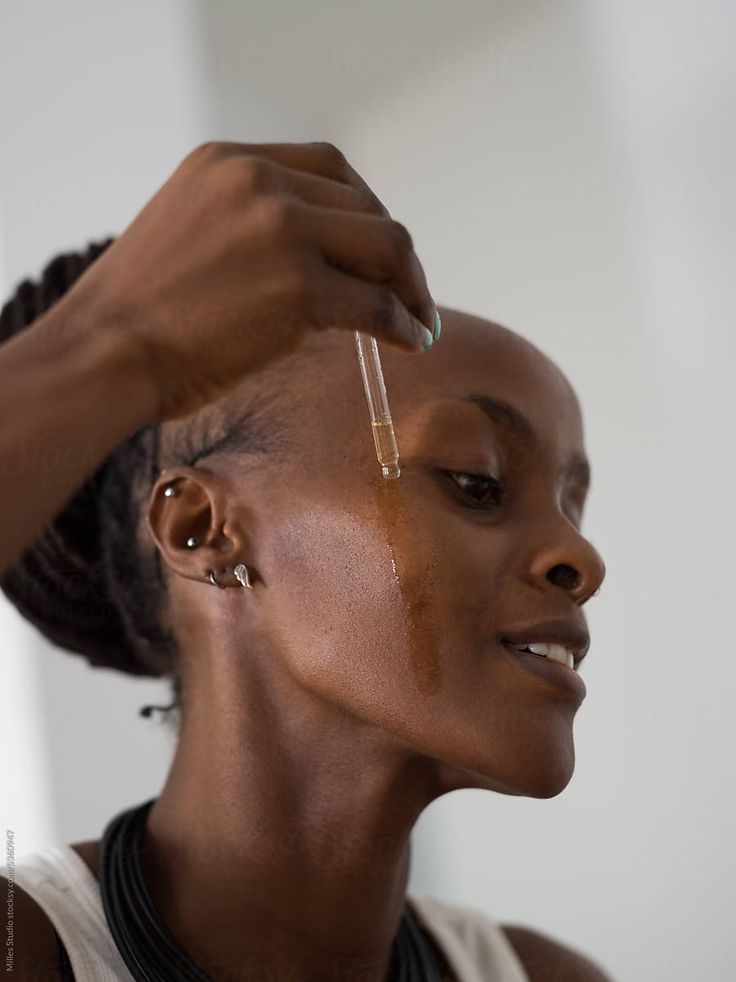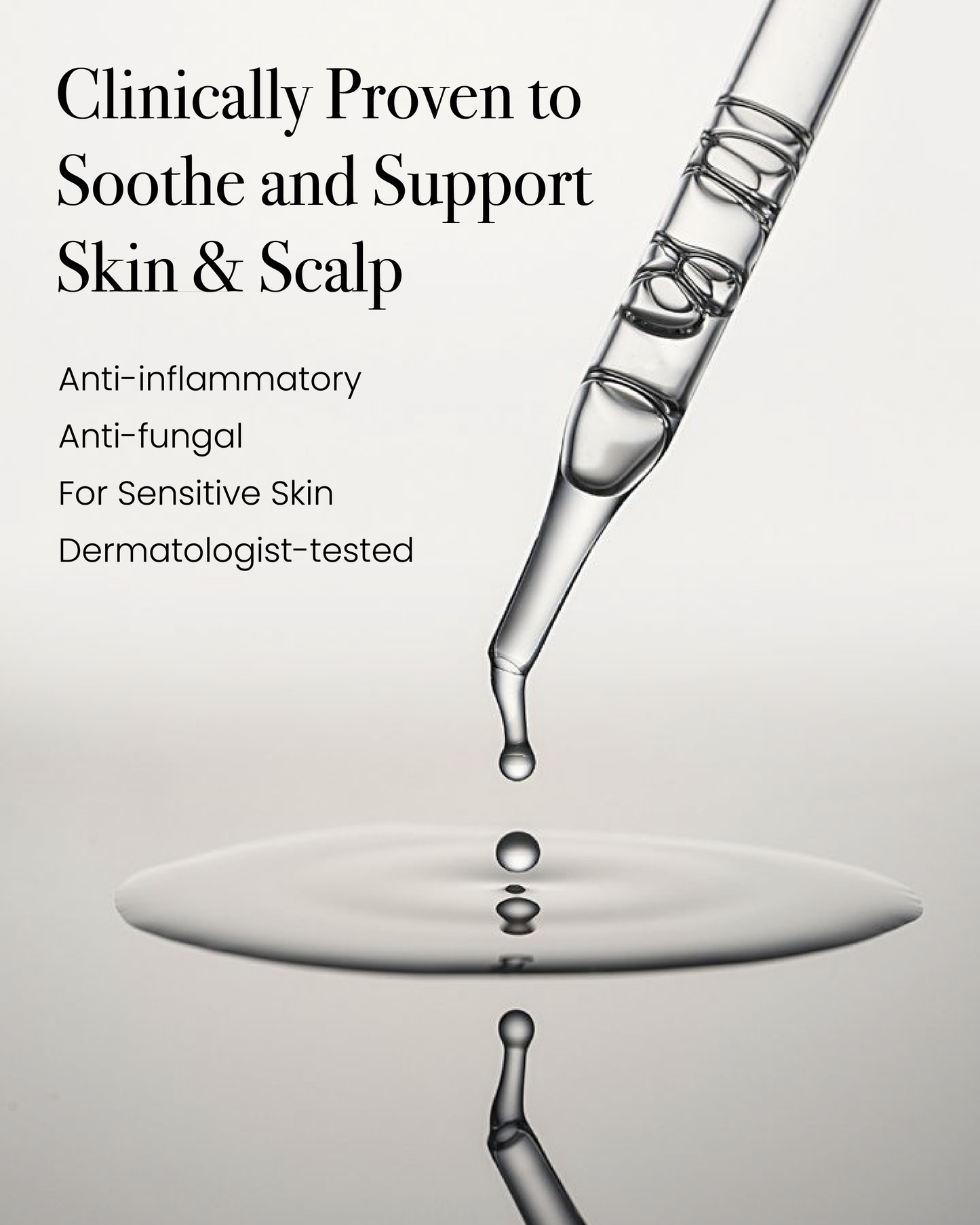
Why Is My Scalp So Flaky and Itchy? The Real Cause Behind Dandruff and Seborrheic Dermatitis
If your scalp feels constantly itchy, flaky, or irritated, you’re not alone. Millions of people struggle with dandruff or seborrheic dermatitis (often called “seb derm”), and it can be uncomfortable, frustrating, and sometimes even embarrassing. While over-the-counter shampoos and treatments can help, understanding the root cause of your symptoms is the first step toward long-term relief.
In this blog, we’ll break down why seborrheic dermatitis causes itching, the yeast responsible for flare-ups, and what triggers this condition — plus how you can manage it gently.
Why Does Seborrheic Dermatitis Cause Itching?
Itching is one of the most common complaints for people with seborrheic dermatitis, but what actually triggers it?
Inflammation:
Seb derm is an inflammatory skin condition. The body’s immune system reacts to an overgrowth of yeast on the scalp, releasing chemicals that cause redness, irritation, and that persistent itching sensation. The itching isn’t just annoying — it’s a signal from your body that your scalp is inflamed and stressed.
Skin Barrier Disruption:
Your scalp has a natural protective barrier that keeps moisture in and harmful microbes out. When this barrier is weakened — whether by harsh shampoos, excessive washing, or environmental factors — it becomes more sensitive. Irritants penetrate more easily, causing itching, redness, and even flaking.
Secondary irritation:
Scratching an itchy scalp can worsen inflammation, creating a cycle of irritation that’s hard to break. That’s why using a gentle, targeted product is crucial. Our products are formulated to soothe inflammation and support the skin barrier, helping to calm itching without harsh chemicals that could exacerbate flare-ups.
Which Fungus Causes Seborrheic Dermatitis?
The main culprit behind seb derm is a naturally occurring yeast called Malassezia.
Normally harmless: Malassezia is present on healthy skin and doesn’t usually cause problems.
Overgrowth triggers symptoms: In some people, especially those with oily skin or a compromised skin barrier, this yeast can grow unchecked. The overgrowth irritates the scalp and triggers inflammation, leading to the flaking, redness, and itching associated with seb derm.
Targeting this yeast is a key part of managing seborrheic dermatitis. Our products contain ingredients that help balance Malassezia on the scalp and beard areas, reducing irritation and promoting healthier skin. Unlike harsh anti-fungal products or chemical-laden shampoos, it works gently to soothe and restore the skin.
Why Does Seborrheic Dermatitis Happen?
Seborrheic dermatitis isn’t caused by a single factor. Several elements contribute to flare-ups:
Excess oil production:
Oily areas of the scalp provide the perfect environment for Malassezia to thrive. People with naturally oily skin or sebaceous glands that produce more sebum are more prone to seb derm.
Stress and hormonal changes:
Physical or emotional stress, fatigue, and hormonal fluctuations can all trigger flare-ups. Stress affects the immune system and may increase inflammation, making the scalp more susceptible to itching and flaking.
Weather and seasonal changes:
Cold, dry weather can worsen symptoms by drying out the scalp, while hot, humid conditions can increase oil production and yeast growth. This explains why seb derm often seems worse in winter or during climate changes.
Compromised skin barrier:
A healthy scalp barrier protects against irritants, microbes, and moisture loss. When this barrier is weakened — whether through harsh cleansing, environmental damage, or skin conditions — the scalp becomes more vulnerable to yeast overgrowth, dryness, and itching.
By addressing these triggers and strengthening the skin barrier, you can significantly reduce flare-ups. Consistent care using products like Seb Natural Calming Serum or Soothing Balm, designed to calm inflammation, nourish the scalp, and reduce yeast activity, is essential for long-term relief.
Tips for Managing a Flaky, Itchy Scalp
Avoid harsh chemicals:
Shampoos or treatments with strong detergents can strip natural oils, worsening dryness and barrier damage.
Use gentle, targeted products:
Products like ours are formulated to reduce flakes, calm itching, and support the scalp barrier without unnecessary chemicals.
Moisturize and nourish the scalp:
Hydrated skin is less prone to irritation. Applying a lightweight treatment cream can soothe dry, inflamed areas and prevent future flare-ups.
Limit scratching:
As tempting as it is, scratching can damage the skin and make seb derm worse. Focus on calming the scalp instead of mechanically removing flakes.
Watch for triggers:
Stress, weather changes, and oily skin can all contribute. Identify what worsens your symptoms and adjust your routine accordingly.
The Takeaway
Flaky, itchy scalp doesn’t have to control your life. Seborrheic dermatitis is caused by an overgrowth of Malassezia yeast, inflammation, and a compromised skin barrier — but with consistent, gentle care, relief is possible. Seb Natural Calming Serum targets the root causes of seb derm, helping calm irritation, reduce flakes, and restore the scalp’s natural barrier.
By understanding why seb derm happens and using products specifically formulated for this condition, you can finally regain comfort and confidence in your scalp health — without harsh chemicals or aggressive treatments.


